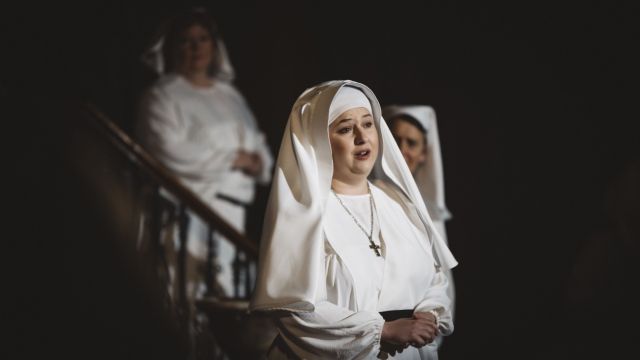Dialogues des Carmélites
Gente, gente! (Italian for ‘People, people!’) is a grassroots not-for-profit opera company producing shows “for the people, by people who love opera”. Many of those opera lovers braved a rainy Saturday night in winter to see the opening night of their production of Dialogues des Carmélites.
The production is interesting for several reasons. Firstly, the company focuses on less commonly performed works, like this three-act opera by French composer Francis Poulenc. Poulenc, born in 1899, contributed widely to twentieth century French music. He served in both World Wars as well as supporting the Resistance poets by putting many of their verses to music. After a “spiritual awakening” he went on to write religious works, one of which is Dialogues des Carmélites.
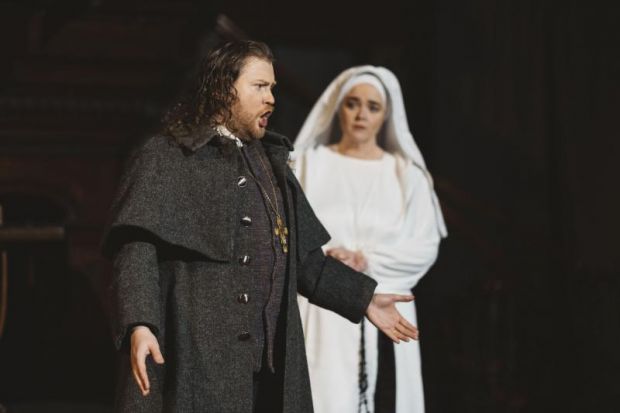
But Dialogues des Carmélites is historical as well as religious. It was inspired by the true story of the Martyrs of Compiègne, a group of Carmelite nuns who, during the French Revolution, refused to renounce their vocation and were executed by guillotine in Paris in 1794.
Poulenc based the opera around a character called Blanche de la Force, who, terrified by horror of the Revolution in Paris, joins the convent in Compiègne. When a few years later, the nuns take the vow of martyrdom, Blanche, overwhelmed once more by fear, flees back to Paris and works as a servant in her old home. On the day the nuns, singing Salve Regina, are executed one by one, Blanche reveals herself from among the ghoulish crowd and joins her sisters at the guillotine.
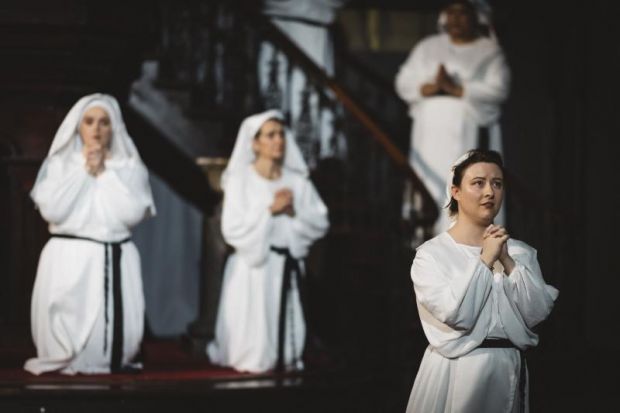
So, setting the opera in a church seems appropriate. Setting it in Sydney’s heritage listed Uniting Church suits the opera’s story beautifully. The church, designed by John Bibb and completed in 1846, is regarded as the best example of Neo Classic design in Australia – but apart from that, the high central pulpit is approached by twin cast iron railed stairs. Galleries supported on cast iron fluted columns run around the interior walls. All the fittings of the vast interior are of local cedar including the vestry behind the pulpit. What a fine space for a director to envisage an opera about religion and revolution and martyrdom!
Stage Director Bec Moret uses the twin stairways, the high, long central pulpit and the doors at each end to great visual effect. The transept and cross, cleared of furniture, is her main stage. All is highlighted by stage lamps in the gallery. Musical director, Joanna Drimitas, and her 14-piece orchestra use a cleared space under the high galleries.
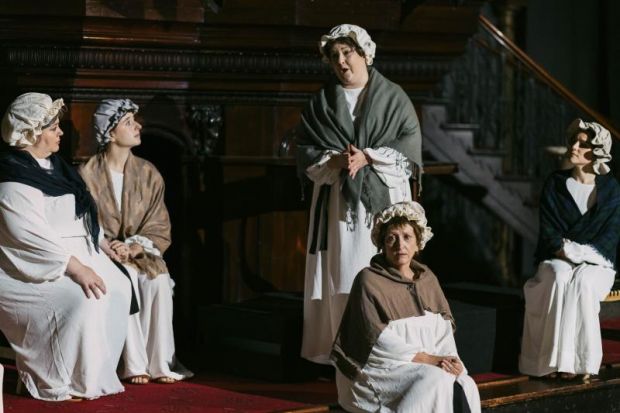
Thirty-five committed performers become the de la Force family, the steadfast nuns, townsfolk and revolutionaries. Dressed in costumes designed by Moret and Elena Charaeva, they take the audience back to France in 1789 and tell their story to music that conjures the unrest of the time as well as the the calm life of the cloister.
Soprano Sarah Cherlin plays the anxious, easily frightened Blanche de la Force. Cherlin shows that anxiety and fear constantly – in her clear voice, lovely inflexions and her face and gestures. Only in the monastery does she show Blanche a little more relaxed. It’s not easy to act and sing so emotionally or wait anxiously while others chastise or advise you in song, but Cherlin does so most effectively. She finds the drama in both the music and the role.
Joanna Dionis Ross is Madame de Croissy, Prioress of the convent, who takes Blanche under her wing but whose death Leaves Balnche scared and lost again. A mezzo-soprano, Dionis Ross finds the spiritual strength of the Prioress in notes that ring to the high ceiling of the apse when she first meets Blanche, but become more sombre as her health begins to fail.
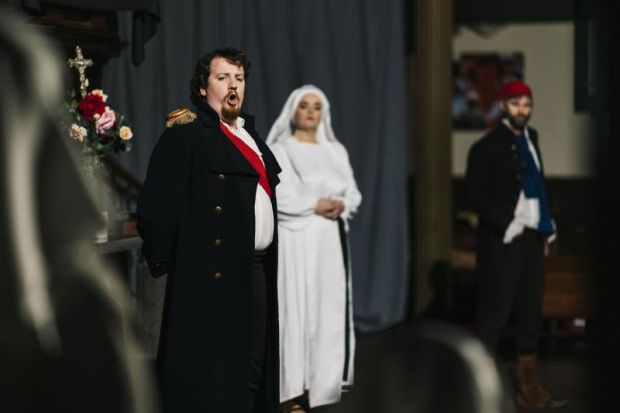
Baritone Tristan Entwistle and tenor Daniel Macey play Le Marquis de la Force and his son Chevalier de la Force, their powerful voices admonishing Blanche so often for her timidness that they are as much to blame for her leaving as fear itself.
After the death of the Prioress, Sam Lestavel, Laura Scandizzo and Sophie Blades lead the nuns in some very beautiful songs and prayers. Katrina Mackenzie plays a very young, naïve nun who befriends Blanche and protects her when, with the nuns go before the father Confessor, played with energetic verve by Damien Noyce, to vote on the decision to be martyrs.
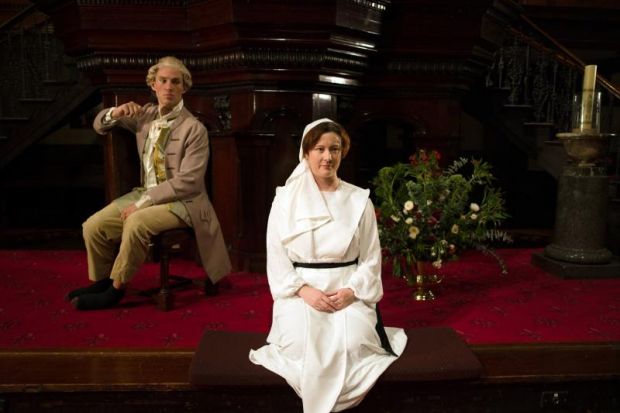
In their simple, flowing white robes and wimples the seventeen nuns are a picturesque sight on the red carpet of the twin railed stairs – and in a single line behind the pulpit as they await execution. That final moment of the production, with the nuns above, groups of townspeople below, and Blanche approaching slowly down the central aisle is a lovely stage picture, which those in the first few rows of the church see most clearly.
Unfortunately, churches are not designed for theatre … so those who wish to see Dialogues des Carmélites next Friday or Saturday, my advice is to be early. It is general seating, and those first few rows allow an appreciation of the whole production – the setting, the direction, the singing the acting and Francis Poulenc’s atmospheric music.
Carol Wimmer
Photographer: Simon Ross
Subscribe to our E-Newsletter, buy our latest print edition or find a Performing Arts book at Book Nook.

